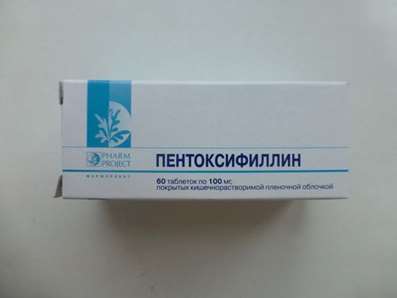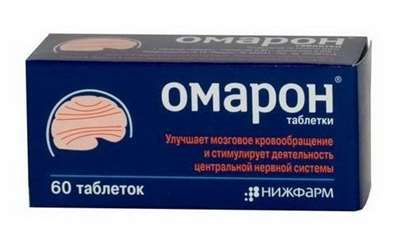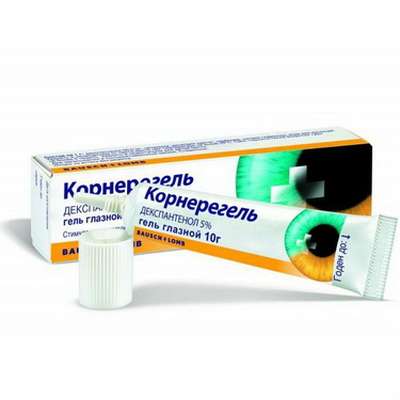Instruction for use: Teveten
I want this, give me price
Dosage form: coated tablets, film coated tablets
Active substance: Eprosartanum
ATX
C09CA02 Eprosartan
Pharmacological group
Angiotensin II receptor antagonists (AT1 subtype)
Nosological classification (ICD-10)
I10 Essential (primary) hypertension: hypertension; Arterial hypertension; Arterial hypertension crisis course; Essential Hypertension; Essential hypertension; Essential hypertension; Essential hypertension; Essential hypertension; Primary hypertension; Arterial hypertension, complications of diabetes; The sudden increase in blood pressure; Hypertensive disorders of blood circulation; hypertensive condition; hypertensive crises; arterial Hypertension; malignant Hypertension; Hypertonic disease; hypertensive crises; accelerated hypertension; malignant hypertension; The aggravation of hypertensive disease; Transient hypertension; Isolated systolic hypertension
I15 Secondary hypertension: Arterial hypertension, complications of diabetes; hypertension; The sudden increase in blood pressure; Hypertensive disorders of blood circulation; hypertensive condition; hypertensive crises; hypertension; arterial Hypertension; malignant Hypertension; hypertensive crises; accelerated hypertension; malignant hypertension; The aggravation of hypertensive disease; Transient hypertension; hypertension; Arterial hypertension; Arterial hypertension crisis course; renovascular hypertension; Hypertension symptomatic; Renal hypertension; Renovascular hypertension; renovascular hypertension; Symptomatic hypertension
Composition and release form
Tablets, coated with a coating.
Eprosartan mesylate 490.55 mg
(Corresponding to 400 mg of eprosartan)
Auxiliary substances: MCC - 179.05 mg; Lactose monohydrate - 28.75 mg; Corn gelatinised starch - 28.75 mg; Crospovidone - 32 mg; Magnesium stearate - 6 mg, purified water - 34.9 mg
Shell: Opadry® pink (YS-1-14643-A) 32 mg (hypromellose, macrogol, polysorbate 80; dye: iron oxide yellow E172; iron oxide red E172; titanium dioxide E171)
In a blistere of 14 pcs .; In the box 1, 2 or 4 blisters.
Tablets, coated with a coating.
Eprosartan mesylate 735.8 mg
(Corresponding to 600 mg of eprosartan)
Auxiliary substances: MCC - 43.3 mg; Lactose monohydrate 43.3 mg; Starch corn gelatinized - 43.3 mg; Crospovidone - 38.5 mg; Magnesium stearate - 7.2 mg; Purified water - 50.9 mg
Shell: Opadry® white (OY-S-9603) - 38.5 mg (hypromellose, macrogol, polysorbate 80, dye: titanium dioxide E171)
In a blistere of 14 pcs .; In the box 1, 2 or 4 blisters.
Description of dosage form
400 mg tablets: pills covered with a light pink color, oval, biconvex, engraved "5044" on one side of the tablet and "SOLVAY" - on the other.
Tablets 600 mg: tablets coated with a white color, oval, biconcave, engraved "5046" on one side of the tablet and "SOLVAY" - on the other.
Characteristic
Angiotensin II receptor blocker.
Pharmachologic effect
Mode of action - hypotensive, vasodilating.
Pharmacodynamics
It acts selectively on angiotensin receptors located in the vessels, heart, kidneys and adrenal cortex, forming a strong bond with them, followed by a slow dissociation. Angiotensin II binds to AT1-receptors in many tissues (for example, in the smooth muscles of blood vessels, adrenal glands, kidneys, heart) and causes vasoconstriction, sodium retention and aldosterone release, target organ damage-myocardial hypertrophy and vessels.
Eprosartan prevents the development or weakening of the effects of angiotensin II. Reduces arterial vasoconstriction, OPSS, pressure in a small circle of circulation, reabsorption of water and sodium ions in the proximal segment of the renal tubules, and secretion of aldosterone. With prolonged use suppresses the proliferative effect of angiotensin II on smooth muscle cells of blood vessels and myocardium. The persistent antihypertensive effect persists for 24 hours without the development of orthostatic arterial hypotension in response to the first dose. Stabilization of antihypertensive action with regular admission occurs in 2-3 weeks without changing the heart rate. In patients with arterial hypertension, eprosartan does not affect the concentration of triglycerides, total cholesterol or cholesterol in the composition of LDL in the blood, determined on an empty stomach. In addition, does not affect the concentration of glucose in the blood on an empty stomach. Has indirect diuretic and nephroprotective effect, reducing the excretion of albumins, while maintaining renal self-regulation, regardless of the degree of renal failure. Does not affect the purine metabolism, does not have a significant effect on the excretion of uric acid in the urine. Eprosartan does not enhance the effects associated with bradykinin (ACE-mediated), such as cough. The incidence of dry, persistent cough in patients receiving eprosartan is 1.5%. When replacing the ACE inhibitor with eprosartan in patients with a cough, the frequency of dry persistent cough is consistent with placebo. The cessation of treatment with eprosartan is not accompanied by a withdrawal syndrome.
Pharmacokinetics
After ingestion of a single dose of 300 mg bioavailability is approximately 13%. Binding to blood plasma proteins is high (98%) and remains constant throughout the therapeutic range of concentrations. The degree of binding to blood plasma proteins does not depend on sex, age, liver function and does not change with mild or moderate renal insufficiency, but may decrease with severe renal failure. Cmax preparation is determined 1-2 hours after ingestion. When taking Eprosartan concomitantly with food, there is a clinically insignificant decrease in absorption (<25%), Cmax and AUC. T1 / 2 - 5-9 hours The volume of distribution - 13 liters, total Cl - 130 ml / min. Output is mostly unchanged - with feces 90%, with urine - 7% when taken orally. A small part (less than 2%) is excreted by the kidneys in the form of glucuronides. 20% of the concentration in the urine is acylglucuronide eprosartan, 80% - unchanged drug. Practically does not cumulate. Body weight, sexual and racial differences do not affect the pharmacokinetics of eprosartan. In persons under 18 years of age, pharmacokinetics have not been studied. In the elderly, the values of Cmax and AUC increase by an average of 2 times, which, however, does not require correction of the dosing regimen. In liver failure, the AUC (but not the Cmax) values increase by an average of 40%, which does not require correction of the dosing regimen. In the treatment of eprosartan in patients with a moderate degree of chronic renal failure (Cl creatinine from 30 to 59 ml / min), AUC and Cmax - by 30%, and with a severe degree (Cl creatinine from 5 to 29 ml / min) - 50% higher Compared with healthy people.
Indications of the drug Teveten
arterial hypertension.
Contraindications
Hypersensitivity to the components of the drug;
pregnancy;
The period of breastfeeding;
Age to 18 years (effectiveness and safety not established).
Carefully:
Severe heart failure III-IV FC (according to NYHA);
Bilateral stenosis of the renal arteries, stenosis of the renal artery of the only kidney;
Decrease in BCC as a result of vomiting, diarrhea, and high doses of diuretics.
The company does not have data on the safety of Teveten® in patients with terminal renal failure (Cl creatinine less than 5 mL / min, uremia II), as well as in patients on hemodialysis.
Application of pregnancy and breastfeeding
Teveten® should not be used during pregnancy. In case of diagnosing pregnancy, the drug should be immediately canceled and warn the patient about possible undesirable consequences. Do not prescribe Eprosartan for women during breastfeeding. If Teveten® is needed, breastfeeding should be discontinued.
Side effects
The overall incidence of adverse events reported in patients taking eprosartan is comparable to that seen with placebo. These actions were generally mild and short, so that only 4.1% of patients taking eprosartan in placebo-controlled clinical trials (6.5% in the placebo group) had to stop treatment.
From the side of the central nervous system: rarely - headache, dizziness, asthenia.
From the cardiovascular system: very rarely - a decrease in blood pressure, incl. Postural hypotension.
From the skin and subcutaneous fat: rarely - skin reactions (rash, itching and urticaria); Very rarely - edema of the face, angioedema.
Other: rarely - cough.
Interaction
Clinically significant drug interactions were not observed. Eprosartan does not affect the pharmacokinetics of digoxin and the pharmacodynamics of warfarin or glibenclamide. The pharmacokinetic properties of eprosartan do not change when it is used concomitantly with ranitidine, ketoconazole, or fluconazole. Eprosartan can be used in combination with thiazide diuretics (including hydrochlorothiazide) and blockers of "slow" calcium channels, incl. Nifedipine prolonged action without waiting for clinically significant adverse events, while Teveten® intensifies their hypotensive effect. Teveten® can be prescribed in combination with lipid-lowering agents (including lovastatin, simvastatin, pravastatin, fenofibrate, gemfibrozil and nicotinic acid). When prescribing lithium drugs simultaneously with ACE inhibitors, a reversible increase in the concentration of lithium ions in serum was observed. It is impossible to exclude a similar effect after the use of eprosartan, therefore, in case of concomitant treatment, it is recommended to carefully monitor the lithium content in the blood serum.
Dosing and Administration
Inside, regardless of food intake. The recommended daily dose is 600 mg once a day in the morning. Selection of an initial dose is not required for elderly patients and for patients suffering from hepatic insufficiency. For patients with moderate or severe renal failure (Cl creatinine <60 mL / min), the daily dose should not exceed 600 mg. The duration of treatment with Teveten® is not limited.
Overdose
There are only limited data on overdose. The drug is well tolerated when ingested. The effectiveness of daily doses up to 1200 mg, with admission for 8 weeks and no reports of an explicit dependence of the frequency of adverse effects on the dose.
Symptoms: possibly a marked decrease in blood pressure.
Treatment: symptomatic therapy.
Precautionary measures
During the treatment of hypertension, care must be taken when driving vehicles and engaging in potentially dangerous activities that require an increased concentration of attention and speed of psychomotor reactions, due to the fact that dizziness and weakness may occur.
Special instructions
Symptomatic hypotension. With a decrease in bcc or a pronounced decrease in the volume of fluid and / or salt content in the body (including during treatment with high doses of diuretics, repeated vomiting, prolonged diarrhea, with a diet with significantly reduced sodium intake), taking the drug may cause a sharp drop in blood pressure (Symptomatic hypotension). Before the appointment of Teveten®, such violations should be eliminated. The transient decrease in blood pressure is not the reason for the discontinuation of the drug; In this case, BP stabilizes with further admission.
Renal failure (severe heart failure). In patients whose renal function depends on the activity of the renin-angiotensin-aldosterone system (for example, in severe heart failure III-IV of NYHA, bilateral renal artery stenosis or renal artery stenosis of a single kidney), during treatment with ACE inhibitors, oliguria and / Or progressive azotemia, and, in rare cases, severe renal failure. Due to the inadequate experience with the use of angiotensin II receptor antagonists in patients with severe heart failure or renal artery stenosis, renal function impairment can not be ruled out with Teveten®, due to the suppression of the renin-angiotensin-aldosterone system. In patients with renal insufficiency prior to the appointment of Teveten® and, periodically, during the course of treatment, renal function should be assessed. If there is a worsening of renal function during this period, Teveten® treatment should be reviewed.
Manufacturer
Solvay Pharmaceuticals BV, The Netherlands.
Storage conditions of the drug Teveten
In a dry place, at a temperature of no higher than 25 ° C.
Keep out of the reach of children.
The shelf life of the drug Teveten
Tablets, film-coated 600 mg - 3 years.
Tablets coated with 400 mg for 2 years.
Do not use beyond the expiration date printed on the package.

 Cart
Cart





